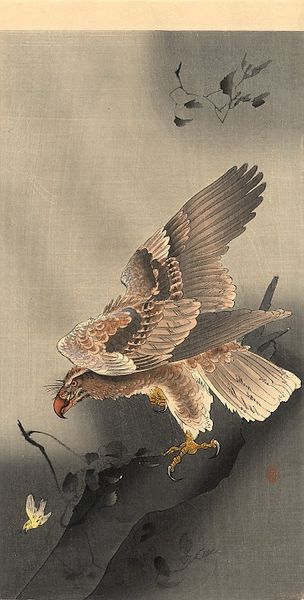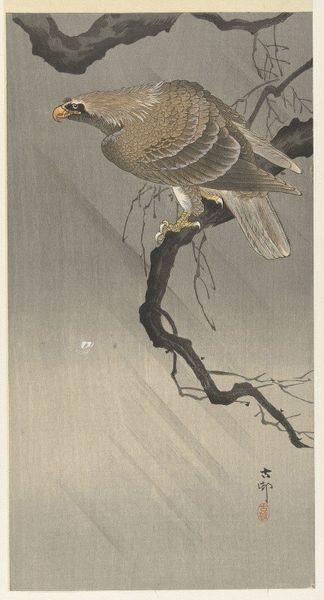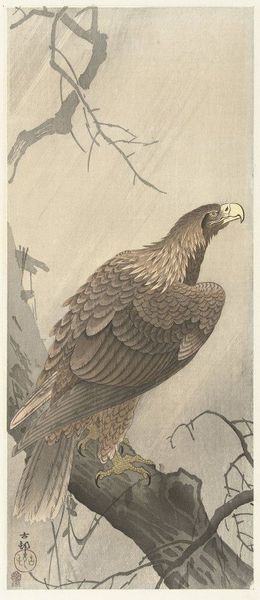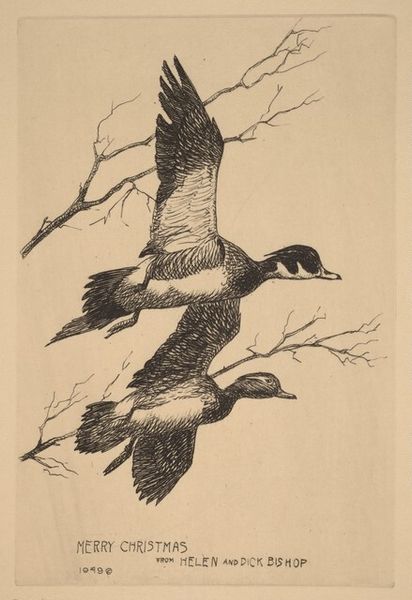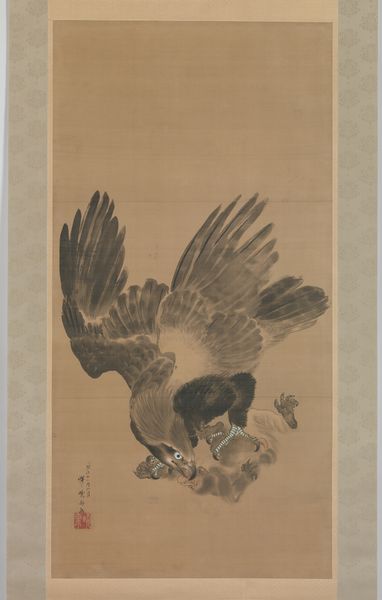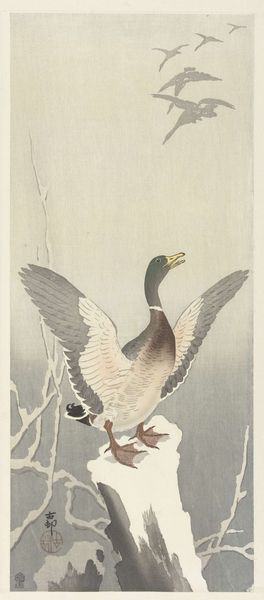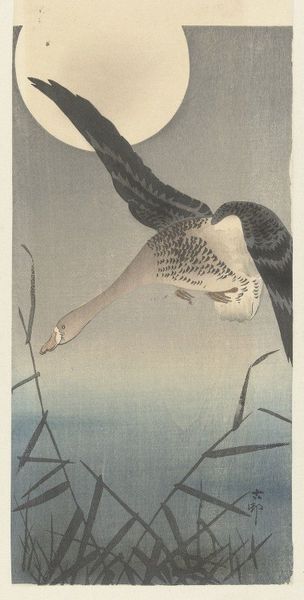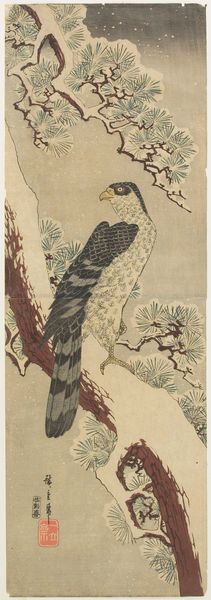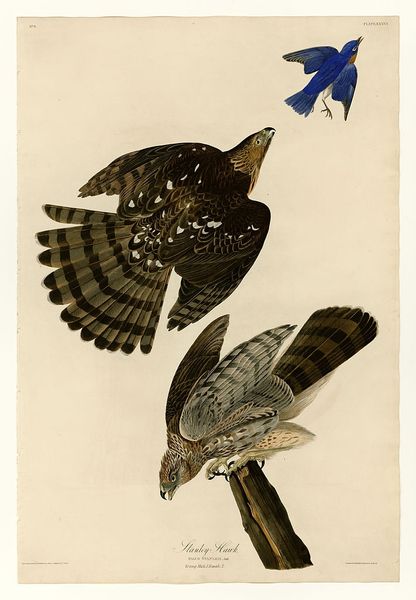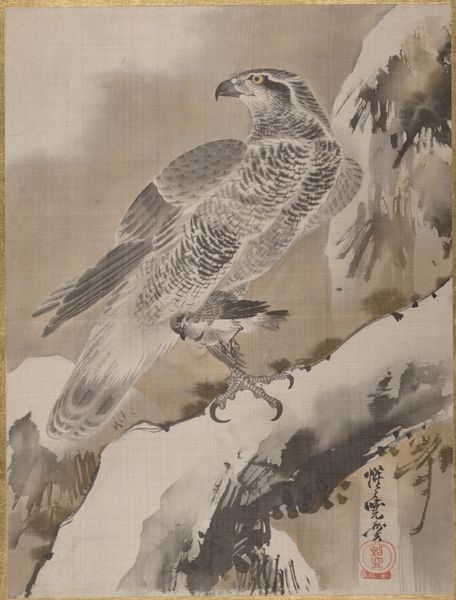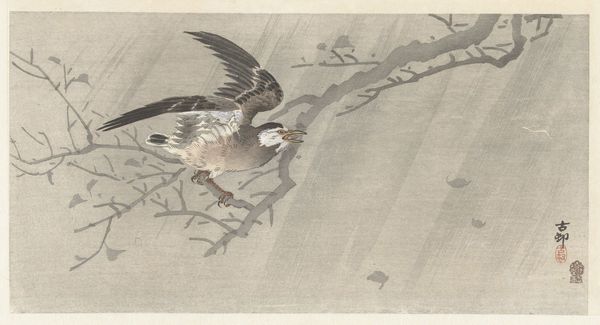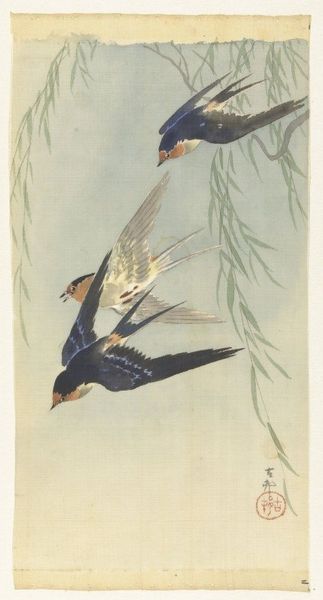
Copyright: Public Domain: Artvee
Curator: Here we have "Eagle lurking for prey," an arresting print from the late 19th to early 20th century attributed to Ohara Koson. Editor: Whoa. That eagle really jumps out. It’s like a silent movie scene right before something intense happens. All wings and talons, very dramatic use of light. Curator: Koson, of course, worked within the tradition of Ukiyo-e, which, by this time, was evolving quite dramatically, largely due to Western influences, particularly in printmaking. He navigated the art market of his time by adapting to these aesthetic trends. Editor: Adapting alright! There’s something so striking about the almost photographic realism of the bird against this flat background, or, maybe it's how traditionally rendered the rest is. Is that just watercolor on paper? The precision in each feather… it's mesmerizing. Almost as if Koson tried to bring traditional Japanese esthetics into the new global century. Curator: Exactly. The "realism," as you put it, became increasingly popular for export art. It served international markets that craved exotic yet familiar imagery. This work cleverly straddles those worlds. Look at the compositional tension—the watchful gaze of the eagle, symbolizing power, poised above delicate foliage, perhaps reflecting life's inherent uncertainties. Editor: Oh, I love that take, yeah it feels like nature in this work holds this very careful, but brutal, sense of balance, predator and prey and stuff like that. Did Koson do lots of these bird prints? Curator: He became renowned for them. Birds and flowers were consistent subjects, allowing him to demonstrate incredible technical skill, also becoming part of Japanese self-representation on the global stage, and of course selling exotic art objects abroad, at once negotiating global currents and appealing to orientalist taste, creating cultural narratives and economic realities. Editor: Fascinating. Now I look at it in a totally new way! So it becomes not only this compelling scene, but an embodiment of this cultural shift and commerce, pretty interesting indeed. Curator: Precisely. Every stroke tells a tale beyond the surface, echoing a time of transformation.
Comments
No comments
Be the first to comment and join the conversation on the ultimate creative platform.
